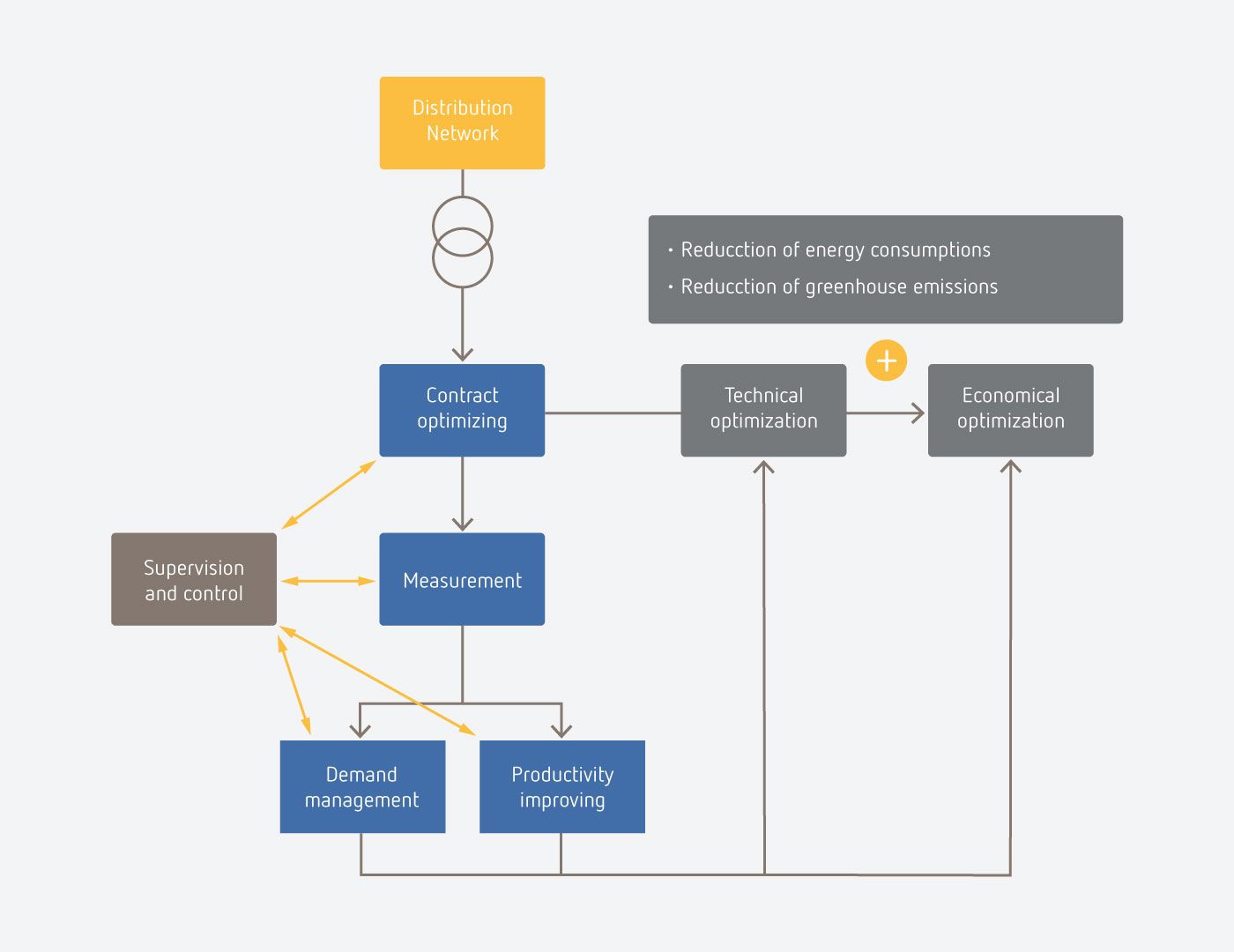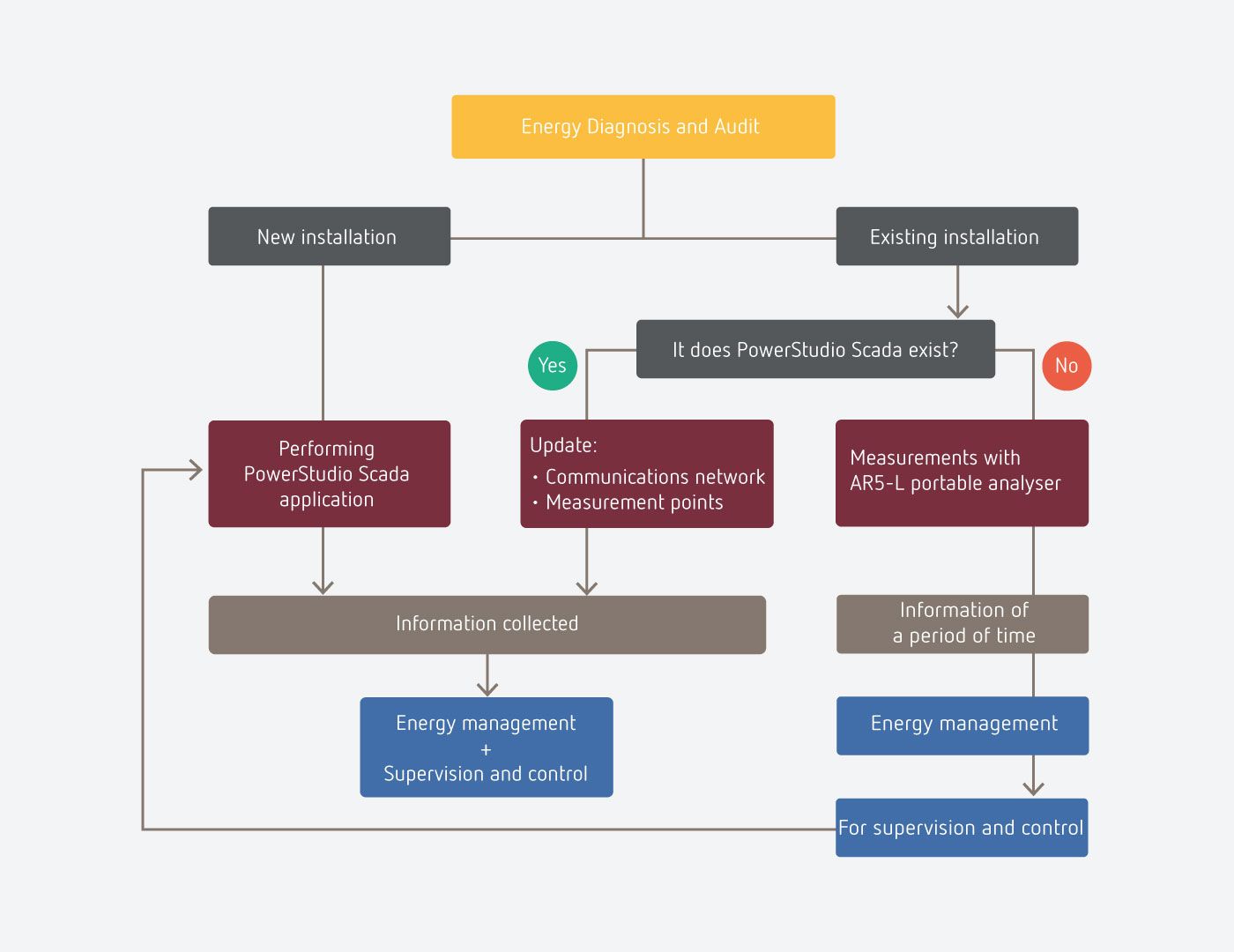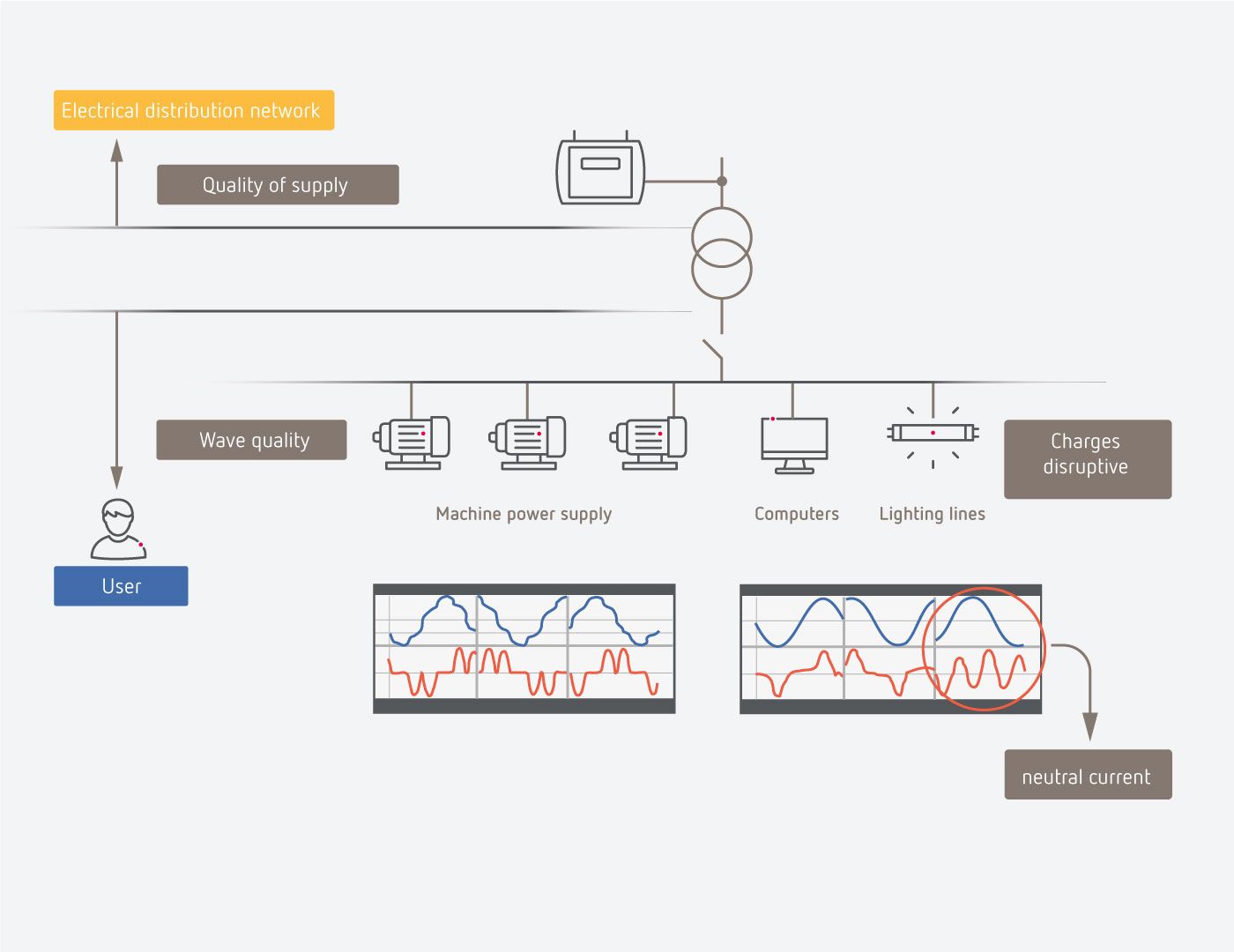
The current great increase in energy demand, as well as the short term forecasts show a series of important problems worldwide:
There are two basic reasons that lead us to this analysis: First, there is an extremely high dependence on fossile energies as described below:
On the other hand, 15% of the world population consume 53% of the energy generated. This fact is specially important now, due to the growing economies. That implies a great increase in the energy consumptions of those countries.
Thus, in order to handle the current and future energy needs with the global sustainability of the environment and the economies, there are two very important strategies to work in:
CIRCUTOR is going to give you the necessary advices for having an efficient electrical installation.
Electrical energy efficiency is understood as the reduction in power and energy demands from the electrical system without affecting the normal activities carried out in buildings, industrial plants or any other transformation process.
Additionally, an energy effi cient electrical installation allows the economical and technical optimization. That is, the reduction of technical and economical costs of operation.
In short, a study on energy savings and efficiency will involve three basic points:
From a technical point of view, four basic points are considered in order to have a more efficient electrical installation.

With the four basic points explained, we put forth a series of questions on each point. The questions hope to identify the objectives to work on, in order to obtain an efficient electrical installation.
Is your electric contract the most suitable one for your needs?
Do you know that a bad power quality can affects your activities or production processes?
Do you know how, when and where are you using the electrical energy?
Do you really think that all your energy consumed is the most accurate one?
Could you reduce the consumption of electrical energy without affecting the processes or activities carried out?
Would it be possible to improve the technical effi ciency of your electrical installations?
Is there anyway to avoid breakdowns and stoppages on your electrical equipment and installations?
Then, could you improve the productivity of your processes?
The first step to do in a process of electrical energy efficiency is to carry out an electrical energy diagnosis and audit. In this process, measurements of power and energy will be taken, as well as other variables necessary for making the suitable decisions.
Along those lines, two key points should be taken into consideration:
In all cases, there are two ways to carry out the audit depending on the installation that is being studied:
In this case, measurements must be taken using portable measuring equipment. These equipment permit storing all the variables selected in their memory (power, energy, etc.).
The number of measurements agree with the number of points that are considered to be critical or necessary.
Depending on the type of process, the duration of each measurement will be determined. The aim is to represent the true state of the point measured. The portable equipment permits great fl exibility, but on the other hand, it does not permit the follow up of the energy consumption after the appropriate decisions have been made.
It is recommended to study the points where the measurements are taken for the subsequent installation of a fixed measurement system that communicates with the PowerStudio Scada management software. In this case, the portable measurement equipment is a support equipment used in those places where a fi xed system is not available.
In these electrical installations, information can be obtained from the PowerStudio Scada from the data stored in its files.
Then, aside from obtaining information quickly, the critical variables can be followed up.

The incorporation of electronic power equipment is a reality due to the advantages such equipment offers in regards to energy savings and easiness of regulation, that is comfort.
Among these systems, it is worth emphasising all those that regulate or convert some type of electrical magnitude such as UPS, variable speed drives, soft starters, dimmers, PCs, etc.
Along with the energy-related advantages of these systems, their use generates high frequency and harmonic currents, as well as current leakages to ground, thas is a bad waveform quality.
Nonetheless, it is important to distinguish between electric power quality supply and waveform quality. It allows to know the origin of the disturbances.

As previoulsy stated, besides reducing electric power consumption, an effi cient electrical installation reduces its costs of operation. For a better understanding, each one of these costs is explained in detail hereafter:
What are they
Technical costs are understood to be the loss of capacity in transporation and distribution, as well as heating (electrical losses), disturbances and voltage drops in the electrical installations and systems.
What are they caused by
The following causes are responsible for this technical saturation in the electrical installations:
How are they reduced
Technical costs are reduced as follows:
Which are the benefi ts of improving technical costs
What are they
These are the costs of a bill that is not optimized and the amount resulting from the technical costs generated. They can be classifi ed as follows:
1- Visible costs
How are they reduced
By studying the electricity bill, the actions needed to reduce the global cost can be defi ned.
2- Hidden costs
What are they
– All unnecessary energy consumption. So, the costs due to unnecessary power and energy consumptions or due to can be dispensable certain time
– All the costs origined as a consequence of the technical costs and the use of receivers that can generate disturbances. Although they are not obvious, they can represent a signifi cant company expense. These are divided into two types:
Electrical installation costs
Costs in productive processes
How are they reduced
Which are the benefits of improving visible and hidden economical costs
What are they
CO2 emissions produced by the consumption of unnecessary energy.
To give an idea of its magnitude, 1 MW·h generated by fossil fuels emits 1 ton of CO2. If considering mixed electric energy generated by fossil fules and renewable energy sources, the ratio is approximately 0.6 tons of CO2 per MW·h.
How are they reduced
By making a general proposal to reduce global energy consumption in an industrial plant or building. So that, an initial diagnosis is required to determine the following points:
Which are the benefits of improving ecological costs
Spain
Associations
Universities
Europe
Resto del mundo
Protocolos de Medida y Verificación